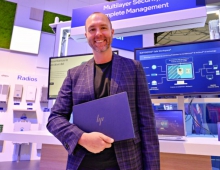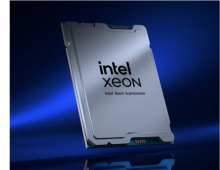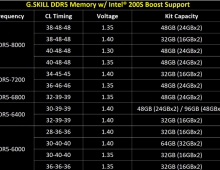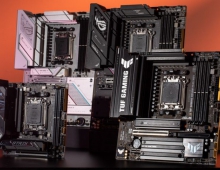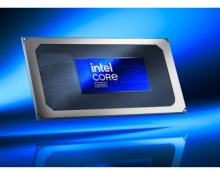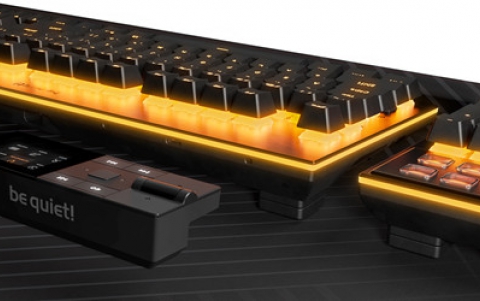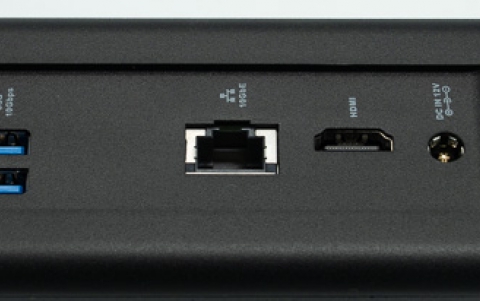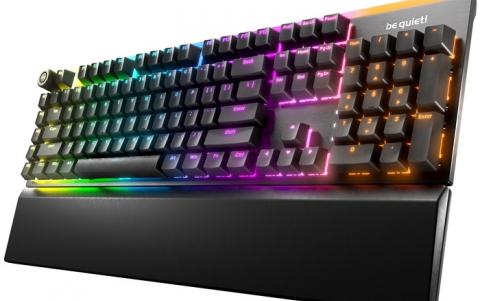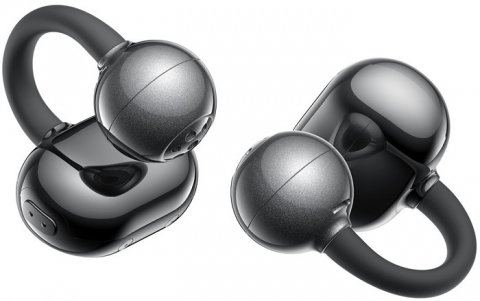
Intel 'Show and Tell' Highlights 70 Projects, Offers Glimpse of Computing Future
At the Computer History Museum on Wednesday, Intel unveiled more than 70 futuristic projects and concepts underway in its labs in the areas of the environment, healthcare, visual computing, wireless mobility and more.
Chief Technology Officer and Senior Fellow Justin Rattner outlined dramatic ways today's research investments will impact technology coming in the next 5 years, reshaping how people interact with computers and improve the environment.
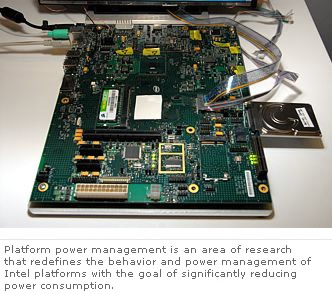 "Hundreds of researchers inside Intel, and our close work with other technology companies, scientists, universities and governments will bring dramatic change over the next 5 years," Rattner said. "The sampling of projects on display here, and the doubling of our R&D investment over the past 10 years, will speed scientific discovery, improve health care, better the environment, advance visual computing and bring a rich and wireless Internet experience from the device of your choice, anywhere in the world."
"Hundreds of researchers inside Intel, and our close work with other technology companies, scientists, universities and governments will bring dramatic change over the next 5 years," Rattner said. "The sampling of projects on display here, and the doubling of our R&D investment over the past 10 years, will speed scientific discovery, improve health care, better the environment, advance visual computing and bring a rich and wireless Internet experience from the device of your choice, anywhere in the world."
Visual Computing, Many Cores Will Change Computers
As future Intel chips scale from a few cores to many, the transition to mainstream parallel computing in which multiple computer tasks are handled simultaneously will result in an explosion of visual computing capabilities including life-like 3-D environments, immediate, real-world analysis of video feeds and more natural ways for people to interact with their devices.
Intel, together with Neusoft, demonstrated a future car application with cameras as eyes and multi-core processor-based computers as the brain. Future cars will be able to much more accurately identify other vehicles and pedestrians that are getting too close and alert drivers or take its own safe actions to prevent accidents.
This type of visual computing requires much more computing power, and in turn poses parallel (multiple and simultaneous processor requests) programming challenges. The car demonstration took advantage of Intel's Ct programming research, a C/C++ language extension created in Intel's labs, which enabled the program to scale from 2 to 8 cores to conduct its accident prevention work without writing additional software code or compilers.
Intel's 32nm Logic Process
As Intel ramps its 45nm logic process, future processes are under development. Intel showed progress on the 32nm process, which is due for initial production in 2009. The 32nm process continues to drive Moore's Law by doubling transistor density compared to that at 45nm (as measured by SRAM cell size). It incorporates the 2nd generation of high-k/metal gate to further improve performance and performance per watt. And, it makes use of immersion lithography for patterning critical layers, a first for Intel. A functional 291 Mbit SRAM wafer built on 32nm was part of the demo.
Interactive Ray-Tracing on Multi-Core IA
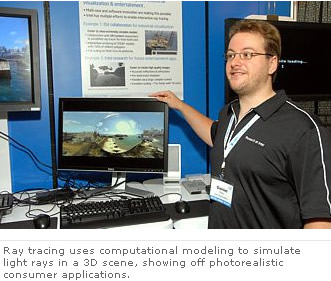 Ray tracing uses computational modeling to simulate light rays in a 3D scene. The trend to multi-core makes it possible to use ray tracing for interactive 3D graphics for a variety visual computing applications. Intel demonstrated a collaboration with researchers at VRContext to enable the visualization of extremely complex industrial models using Intel multi-core processors.
Ray tracing uses computational modeling to simulate light rays in a 3D scene. The trend to multi-core makes it possible to use ray tracing for interactive 3D graphics for a variety visual computing applications. Intel demonstrated a collaboration with researchers at VRContext to enable the visualization of extremely complex industrial models using Intel multi-core processors.
Technology Advancing the Environment
Researchers are looking at ways to improve the environment and energy efficiency of Intel-based products and systems with plans to continue improving a computer's performance but at dramatically reduced levels of power consumption and electricity needs. Intel researchers are exploring a new power management technique that could redefine the behavior and power management needs of future Intel-based computers.
The technique's technologies, collectively called " Platform Power Management," operate by continually monitoring changes in a computer's operation and intelligently reducing power, or turning off altogether, to portions of the system that are not in use such as the radio or USB ports. Early demonstrations of this work have shown power savings of more than 30 percent when a system is idle or lightly active. In the next few years, Intel researchers anticipate to extend these advancements and demonstrate reductions in power consumption of 50 percent whether the computer is idle or in heavy use. Platform power management could someday benefit the full range of Intel products, from mobile Internet devices (MIDs) all the way to high-performance servers.
Ultra-fast Yet Shrinking Wireless World; Speech Recognition
 While Intel processors and mobile devices continue to shrink, demand for continuing the performance and Internet experience worthy of a fully loaded, larger laptop or desktop computer is ever increasing. Researchers at Intel are looking at technologies that will allow small Mobile Internet Devices to be aware of and interact with their surroundings, so that the consumer's experience is not limited by the small size of the device.
While Intel processors and mobile devices continue to shrink, demand for continuing the performance and Internet experience worthy of a fully loaded, larger laptop or desktop computer is ever increasing. Researchers at Intel are looking at technologies that will allow small Mobile Internet Devices to be aware of and interact with their surroundings, so that the consumer's experience is not limited by the small size of the device.
Speech interfaces, for example, are particularly suitable for small mobile devices because of the limitation of the physical input and output channels. Intel researchers demonstrated a speech interface controlling the task of creating connections between two mobile devices and a wireless display with the goal of sharing resources and services. For example, consumers can speak commands in a natural manner to synch their mobile device with a large screen television to share recent photos of their children with grandparents.
 "Hundreds of researchers inside Intel, and our close work with other technology companies, scientists, universities and governments will bring dramatic change over the next 5 years," Rattner said. "The sampling of projects on display here, and the doubling of our R&D investment over the past 10 years, will speed scientific discovery, improve health care, better the environment, advance visual computing and bring a rich and wireless Internet experience from the device of your choice, anywhere in the world."
"Hundreds of researchers inside Intel, and our close work with other technology companies, scientists, universities and governments will bring dramatic change over the next 5 years," Rattner said. "The sampling of projects on display here, and the doubling of our R&D investment over the past 10 years, will speed scientific discovery, improve health care, better the environment, advance visual computing and bring a rich and wireless Internet experience from the device of your choice, anywhere in the world."
Visual Computing, Many Cores Will Change Computers
As future Intel chips scale from a few cores to many, the transition to mainstream parallel computing in which multiple computer tasks are handled simultaneously will result in an explosion of visual computing capabilities including life-like 3-D environments, immediate, real-world analysis of video feeds and more natural ways for people to interact with their devices.
Intel, together with Neusoft, demonstrated a future car application with cameras as eyes and multi-core processor-based computers as the brain. Future cars will be able to much more accurately identify other vehicles and pedestrians that are getting too close and alert drivers or take its own safe actions to prevent accidents.
This type of visual computing requires much more computing power, and in turn poses parallel (multiple and simultaneous processor requests) programming challenges. The car demonstration took advantage of Intel's Ct programming research, a C/C++ language extension created in Intel's labs, which enabled the program to scale from 2 to 8 cores to conduct its accident prevention work without writing additional software code or compilers.
Intel's 32nm Logic Process
As Intel ramps its 45nm logic process, future processes are under development. Intel showed progress on the 32nm process, which is due for initial production in 2009. The 32nm process continues to drive Moore's Law by doubling transistor density compared to that at 45nm (as measured by SRAM cell size). It incorporates the 2nd generation of high-k/metal gate to further improve performance and performance per watt. And, it makes use of immersion lithography for patterning critical layers, a first for Intel. A functional 291 Mbit SRAM wafer built on 32nm was part of the demo.
Interactive Ray-Tracing on Multi-Core IA
 Ray tracing uses computational modeling to simulate light rays in a 3D scene. The trend to multi-core makes it possible to use ray tracing for interactive 3D graphics for a variety visual computing applications. Intel demonstrated a collaboration with researchers at VRContext to enable the visualization of extremely complex industrial models using Intel multi-core processors.
Ray tracing uses computational modeling to simulate light rays in a 3D scene. The trend to multi-core makes it possible to use ray tracing for interactive 3D graphics for a variety visual computing applications. Intel demonstrated a collaboration with researchers at VRContext to enable the visualization of extremely complex industrial models using Intel multi-core processors.
Technology Advancing the Environment
Researchers are looking at ways to improve the environment and energy efficiency of Intel-based products and systems with plans to continue improving a computer's performance but at dramatically reduced levels of power consumption and electricity needs. Intel researchers are exploring a new power management technique that could redefine the behavior and power management needs of future Intel-based computers.
The technique's technologies, collectively called " Platform Power Management," operate by continually monitoring changes in a computer's operation and intelligently reducing power, or turning off altogether, to portions of the system that are not in use such as the radio or USB ports. Early demonstrations of this work have shown power savings of more than 30 percent when a system is idle or lightly active. In the next few years, Intel researchers anticipate to extend these advancements and demonstrate reductions in power consumption of 50 percent whether the computer is idle or in heavy use. Platform power management could someday benefit the full range of Intel products, from mobile Internet devices (MIDs) all the way to high-performance servers.
Ultra-fast Yet Shrinking Wireless World; Speech Recognition
 While Intel processors and mobile devices continue to shrink, demand for continuing the performance and Internet experience worthy of a fully loaded, larger laptop or desktop computer is ever increasing. Researchers at Intel are looking at technologies that will allow small Mobile Internet Devices to be aware of and interact with their surroundings, so that the consumer's experience is not limited by the small size of the device.
While Intel processors and mobile devices continue to shrink, demand for continuing the performance and Internet experience worthy of a fully loaded, larger laptop or desktop computer is ever increasing. Researchers at Intel are looking at technologies that will allow small Mobile Internet Devices to be aware of and interact with their surroundings, so that the consumer's experience is not limited by the small size of the device.
Speech interfaces, for example, are particularly suitable for small mobile devices because of the limitation of the physical input and output channels. Intel researchers demonstrated a speech interface controlling the task of creating connections between two mobile devices and a wireless display with the goal of sharing resources and services. For example, consumers can speak commands in a natural manner to synch their mobile device with a large screen television to share recent photos of their children with grandparents.


